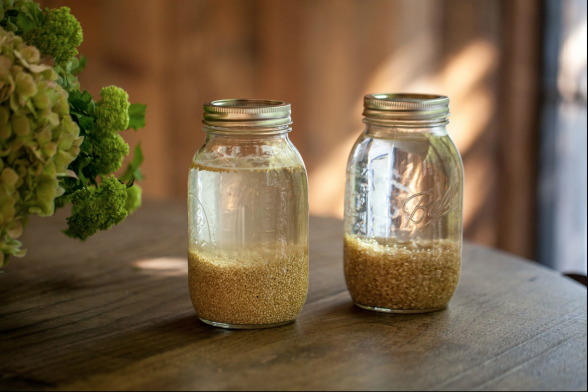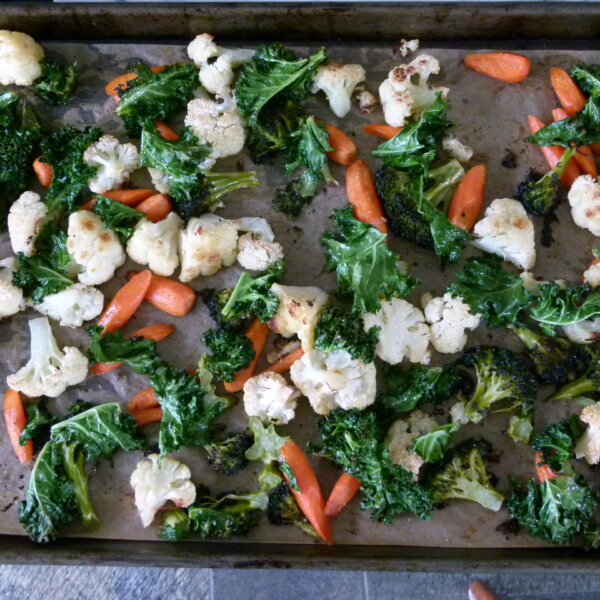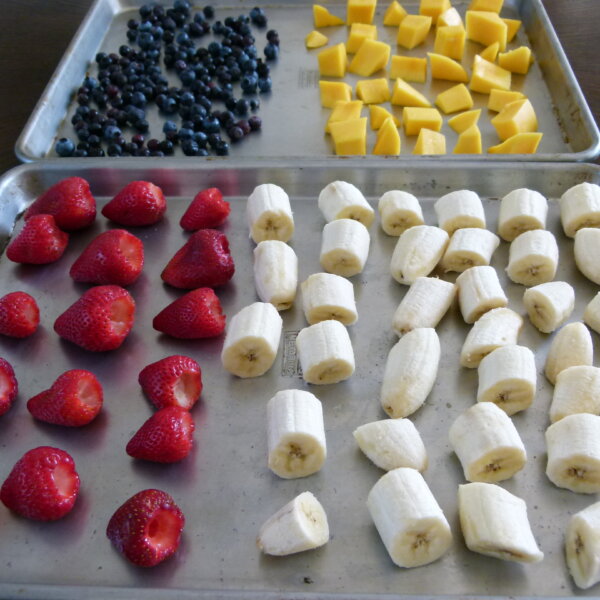
Jenni Kayne asked me to share with her readers one of her favorite tips that I have taught in class — soaking grains. So we have collaborated on a today’s post! Do check out her amazing lifestyle website, ripplustan.com which is one of my favorite sources for learning about new products, entertaining ideas and of course, fashion!
I am a big fan of a mostly plant-based diet and more importantly, I emphasize as many whole, unprocessed foods as possible. Whole grains can definitely be part of a healthful diet, but they are much more nutritious and digestible when prepared the way our ancestors did by soaking, fermenting or sprouting them before cooking or eating.
Whole grains contain an anti-nutrient called phytic acid which binds with certain minerals (e.g. zinc, phosphorous, calcium and iron) and prevents them from being absorbed by the body. Phytic acid is also very hard on the digestive system. Most of the phytic acid is contained in the exterior bran and germ layers of the grain. Ironically, whole grains are much higher in minerals than polished or refined grains, but we won’t receive those benefits unless we neutralize the phytic acid.
Phytic acid is also an enzyme-inhibitor which keeps the grains/seeds dormant until the conditions for germination are just right. Not only does phytic acid prevent seeds from sprouting, it also helps protect them from predators by blocking digestive enzymes so that the seeds stay untouched as they pass through our digestive tract.
Soaking, fermenting or sprouting your grains before cooking them will neutralize the phytic acid and release the enzyme inhibitors, thus making them much easier to digest and making the nutrients more assimilable. Phytic acid can be neutralized in as little as 7 hours when soaked in water with the addition of a small amount of an acidic medium such as vinegar or lemon juice. Soaking also helps to break down gluten, a hard-to-digest protein found in grains such as wheat, spelt, rye and barley.
Fortunately, grains are very easy to soak. You just need to start the process the night before or the morning of the day you want to eat them. Pour grains into a bowl and cover with warm or room temperature filtered water. Add a tablespoon of something acidic, such as yogurt, raw apple cider vinegar, lemon juice, whey or kefir, for example. Cover and allow to sit at room temperature for at least 7 hours or longer. Change the water after 24 hours if you’re still soaking. Drain and rinse the grains before cooking with fresh water.
Even though 7-8 hours is the minimum recommended for soaking, even a few hours is better than nothing. An extra benefit to soaking grains is a shorter cooking time. The longer you soak them, the less time is needed to cook and also less water. There’s no formula to figuring this out, but usually if you soak 1 cup of brown rice for 8 hours, you can reduce the cooking time from 50 minutes to about 40 and use about 1/3 cup less water. For 1 cup of soaked quinoa, you can cook for about 10 minutes and use 1 ½ cups of water.
If you’ve been eating whole grains, nuts and seeds for years without soaking, don’t stress. A small amount of phytic acid is reduced just by the cooking process alone. But for minimal effort, you can significantly improve the digestibility and nutrition of these important foods.











I soak nuts but am new to soaking flours. After soaking flour and not being able to drain, am I getting any benefit from the soaking since I am then keeping the soaking liquid in the recipe and eating it?
Yes. Soaking flours neutralizes the phytic acid.
Thanks for this great tip on soaking grains. Obviously Quinoa, rice, kamut, etc must still be cooked, but is it necessary to cook oats or similar grains afterwords? For example, can oats go from soak/rinse to then be mixed in with fruit and yogurt and eaten?
Thanks for your question, Francis. You bring up such an excellent point which I should have addressed! Actually, many people eat sprouted quinoa in it’s raw state. It’s not my cup of tea, but some raw foodists love it. But as for soaked oats and buckwheat, you can definitely eat them after soaking and not cooked. It’s basically muesli! Check out these two recipes: https://pamelasalzman.com/raw-oat-chia-porridge-recipe/ and https://pamelasalzman.com/muesli/
You said to discard the water that it is soaked in; however I’m curious if this is important since this e-book “Is Your Flour Wet?” has you soaking things and then using the liquid it’s soaked in to make the flour. http://wholenewmom.com/wp-content/uploads/2012/03/Is-Your-Flour-Wet-eBook-1.pdf
So I have the same question –> is the e-book mis-advising?
Great question, Rachelle! When you soak grains with an acid, such as whey or vinegar for example, and you cook the grains in the soaking liquid, it can impart a sour taste to the grains. That is one reason I discard the liquid. Another reason has to do with soaking brown rice, which contains high levels of inorganic arsenic. The arsenic leaches out of the rice when soaked so you definitely want to discard the soaking liquid. Soaking flour is different. Flour will absorb the liquid so there won’t be anything left to drain! I only perused very quickly the ebook you referred to and it seems like the author does advise discarding the liquid that the grains are soaked in. Let me know if you have any questions. This is a very good practice to start!
another question about soaking steel-cut oats. I soak and cook a big batch weekly. But I find in the morning the soaking liquid has all been absorbed. I just add a bit more water and start cooking. So I can’t drain it – do I still need to rinse it?
Here’s what you do: place 1 cup of steel cut oats in a bowl and cover it with room temperature water by a few inches (and some vinegar or acid if you want). Soak it all day or overnight. There should be plenty of water to drain. Then start with fresh water and cook. This is not the same as “overnight oats” where you bring the water to a boil, turn off the heat and allow the oats to absorb the water all night and become soft. If you want to soak your oats and then make overnight oats, just start in the morning and drain the oats at night. Then start with fresh water, bring to a boil, turn off heat immediately, cover and allow to sit until morning. Then reheat. Does that make sense? I hope it’s not too confusing!
yes, that makes sense. I guess I’m not adding enough soaking water as it is normally all absorbed by morning (no I don’t boil it first, just soak). I just add an extra cup of water and then cook the oats. I’ll add more water and start draining and rinsing. Thanks
Some packages of grains suggest soaking while others don’t which I thought implied they were presoaked…is that correct? My Quinoa for example tastes completely different because I buy the kind that doesn’t require soaking?? Another example is the 10 min farro from Trader joes- would you soak that too? Thanks
You don’t need to soak grains in order to cook them. It’s a digestibility/nutrition thing, not a cooking/taste thing. Manufacturers aren’t going to ask you to take that extra step. Nothing is presoaked unless it says so. Sometimes you can buy grains that have been par cooked so that when you cook them, they take less time — modern convenience, I guess. That is the case with the Trader Joe’s 10-minute barley and farro — they have been precooked. Hope all that makes sense!
What about steel cut oats? Should they be soaked and drained? Is the water amount affected for cooking?
Oats are a grain and should be soaked and drained before cooking. The amount of water you use to cook them will be affected by the amount of time you soaked them. If you soak for an hour, just use the amount of water you normally would. There’s no formula to figure this out, but when I soak 1 cup steel cut oats overnight, I usually use about 3 1/2 cups water to cook, as opposed to 4 as suggested on the package. I hope that helps!
Do you drain and discard the water, or can you then use it to cook the grains in?
Drain and discard the soaking water. To cook, start with fresh water.
I store my whole grains in the freezer. Does that make any difference when soaking them? Also, will grains stored in the freezer still sprout? I make my own rejuvelac. Thanks!
Grains stored in the freezer can be soaked just the same, but soak at room temperature. Grains stored in the freezer should be sproutable.
What about lentils?
Legumes contain physic acid and should be soaked as well.
This is really interesting! I am just wondering–you mentioned quinoa and brown rice, but does this apply to all grains (e.g. barley, farro, etc.)?
All grains!! Some grains have more phytic acid than others, but it’s a good habit to get into with all of them. Post coming up about soaking nuts soon!